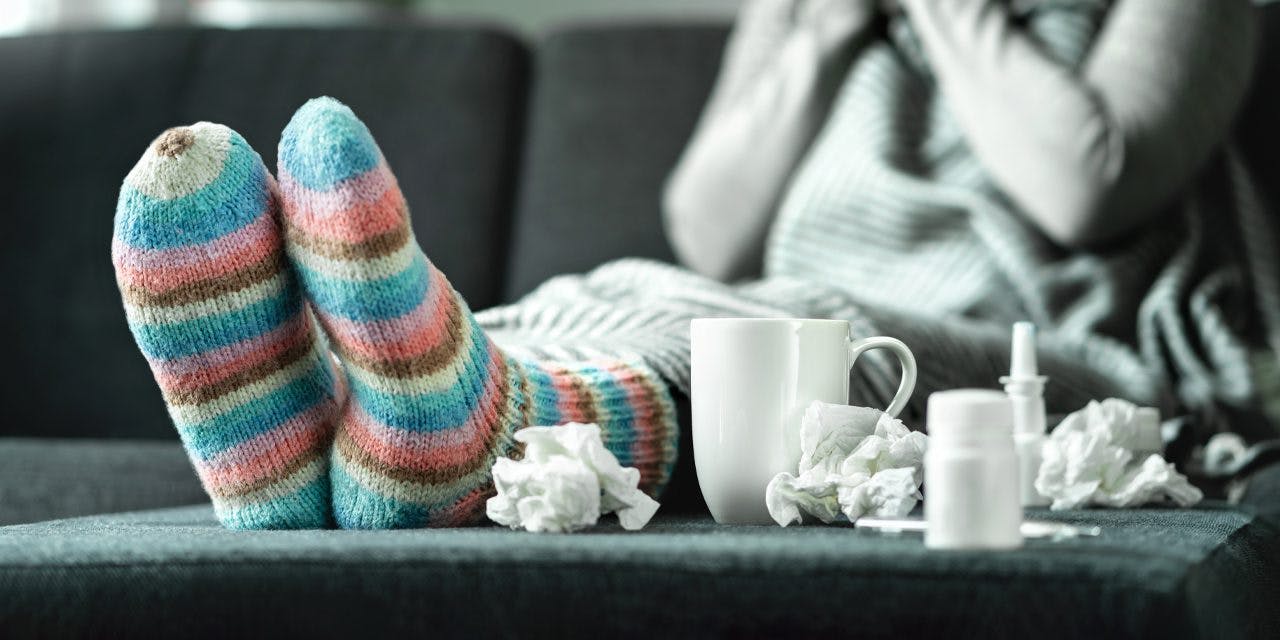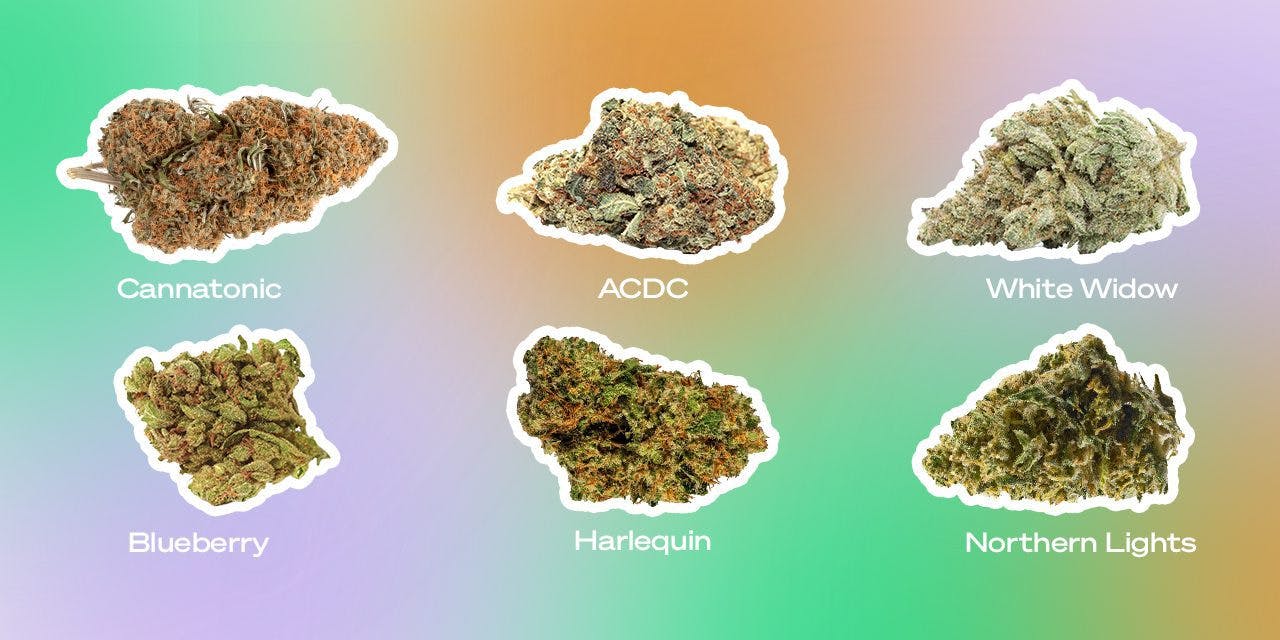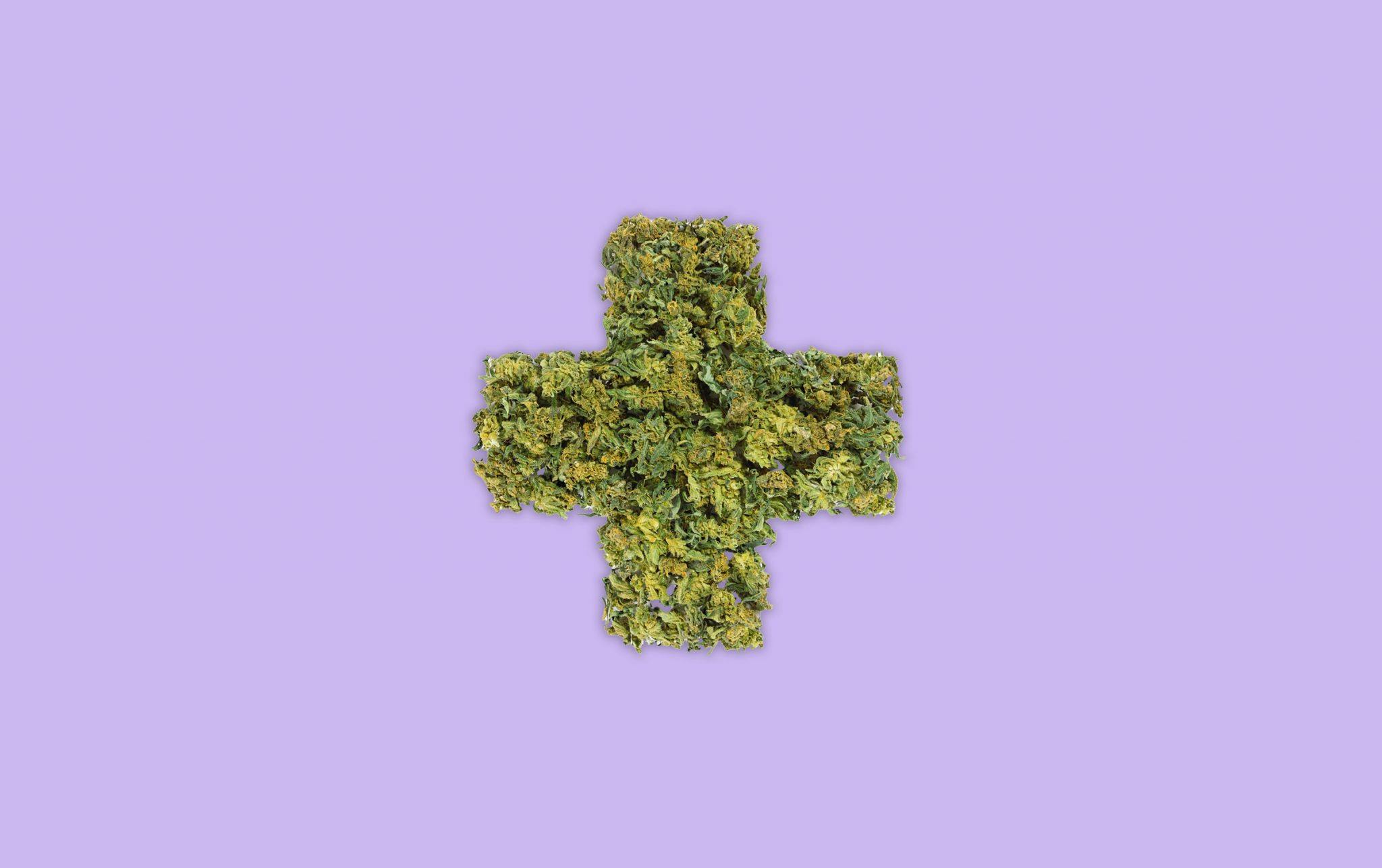Does Weed Help With Flu?

Article written by

Ruth LemonVP of Operations
Content reviewed by

Dr. Lewis JasseyMedical Director - Pediatric Medicine
Cannabis can help ease flu symptoms, but it is not a cure. The flu is caused by the influenza virus and initiates the body’s immune response, which causes inflammation symptoms.
Many natural remedies are popular for relieving flu symptoms, such as drinking bone broth and lemon tea or consuming ginger, garlic, and vitamin C. While research shows that using cannabis during the acute period of flu may increase viral replication, there are ways it can help alleviate some of the symptoms that come with it.
Get your medical marijuana card
Connect with a licensed physician online in minutes.
Is Cannabis a Treatment for the Flu?
Cannabis may treat the flu symptoms, such as fever (antipyretic body temperature and fever-reducing), but it won’t eliminate the virus.
Cannabis reduces inflammation due to the immune response to the influenza virus. Unfortunately, these uncomfortable and sometimes severe symptoms indicate that the body is doing the right thing to eliminate the pathogen. Because the immune response and the subsequent inflammation are essential to clear the virus from your body, dampening the immune response by using cannabis may make it harder to get over the flu.
Other complications may also arise, such as chronic cough and emphysema. This is why it is generally recommended that you stop cannabis use when you are in the initial and acute stages of the flu. However, cannabis may relieve symptoms when used in the recovery stage of the flu.
No research on the direct effects of cannabis on the flu exists; however, cannabis has been shown to relieve symptoms of other conditions that have similar symptoms, such as cytokine storms associated with COVID-19.
How Marijuana Alleviates Flu Symptoms
Cannabis contains various cannabinoids. Tetrahydrocannabinol (THC) and cannabidiol (CBD) are the two most common types. The psychoactive effects of cannabis result from THC, while CBD primarily acts as an anti-inflammatory.
Cannabinoids act on the body via the CB1 and CB2 cannabinoid receptors. CB1 receptors are found in the brain and the nervous system and have a role in the psychoactive and antiemetic effects of cannabis. CB2 receptors are present in the immune system and other parts of the body and are important in modulating the pain response and immune system.
The flu causes the body to activate the immune response. Inflammation occurs as part of this response, causing many of the symptoms associated with the flu. There are five cardinal signs of inflammation: pain, swelling, heat, redness, and loss of function. Many flu symptoms fit into these cardinal signs. You can already see from those signs that cannabis may relieve many of the common flu symptoms by acting on the immune response and inflammation.
However, it must be noted that this sort of inflammation is not always bad, as it can help us beat diseases. When this inflammation becomes chronic, it can produce adverse effects, such as post-viral syndrome or fatigue.
Muscle Aches
Cannabis may help relieve muscle pains caused by the flu. CBD binds to CB2 receptors in the body, reducing inflammation. In addition, CBD is an allosteric modulator of opioid receptors, which are essential in pain regulation. By binding to opioid receptors, CBD reduces pain throughout the body. THC acts on the cannabinoid receptors in the brain to reduce the sensation of pain and give a euphoric effect.
Fever and Chills
Chills occur during the flu as the body tries to raise its core temperature to kill the virus. Fever often occurs alongside chills when the body is fighting an infection. Fever occurs when the body increases its core temperature higher than normal. This is part of the inflammatory response, which activates the immune system. Cannabinoids in cannabis reduce the activity of cells involved in the immune system, alleviating inflammation’s side effects, like fever and chills.
Congestion
When the immune system is activated, it increases mucus production in the lungs. This is because mucus is important for trapping pathogens like influenza and preventing them from reaching the lungs. Unfortunately, too much mucus production results in congestion. THC and CBD both help reduce mucus production, thus relieving congestion.
Runny Nose
A runny nose occurs due to excess mucus production in response to the flu. Like congestion, cannabis relieves a runny nose by decreasing mucus production.
Headaches
Headaches have many causes. One common cause of headaches is restricting the blood flow in the brain, resulting in less oxygen reaching parts of the brain. Cannabis may calm nerves and dilate blood vessels allowing better blood flow and sufficient oxygen delivery to the brain. Cannabinoids also bind to receptors in the brain that regulate pain to help reduce the feeling of pain.
Fatigue
Fatigue is a typical symptom of the flu. Studies have shown that medical cannabis may reduce fatigue, but the mechanism is not fully understood.
Using Cannabis for Flu Symptoms
Cannabis can be administered in many ways. The most common methods are smoking, vaping, using drops, and consuming edibles. When you are sick, some methods are significantly better than others.
When you are sick, the best cannabis ingestion method or route of administration is via drops under the tongue. Cannabis ingested in this way takes about 15 to 30 minutes to start relieving symptoms. When cannabis is utilized in this way, you avoid irritating the lungs and throat with smoke, and the cannabinoids bypass the liver, which allows them to take effect more quickly.
Ingesting cannabis via edibles and capsules is another good option for treating flu symptoms. However, when consumed this way, the cannabinoids go through the liver and are metabolized before they enter the bloodstream to take effect. It takes 60 to 90 minutes before any benefit is noticed.
Smoking and vaping are not ideal for flu treatment and can irritate the throat and lungs, causing you to feel worse. Vaping cannabis oil often requires thinners, and these may also irritate.
It is generally better to wait until you have overcome the flu before you start using cannabis again unless you have another medical reason to continue using it while sick.
The Bottom Line: Can Weed Help With the Flu?
Cannabis can help relieve flu symptoms when you are in the recovery stage. This is because the cannabinoids THC and CBD act on cannabinoid receptors in the body to reduce the inflammation caused by the immune response.
Whether you use cannabis or not, if your flu symptoms do not resolve within a week or you feel they are getting worse, you should see your doctor.
Frequently Asked Questions
What effects does marijuana use have on the flu?
Marijuana can relieve symptoms such as muscle aches, congestion, runny nose, headaches, fatigue, fever, and chills. This is because cannabinoids in marijuana reduce inflammation. However, some research shows that cannabis may increase viral replication of some types of flu.
Which marijuana strains are most helpful for the flu?
Harlequin, Cannatonic, Grape God, and ACDC are all considered good for treating flu symptoms. However, no definitive evidence suggests that a particular strain or variety helps manage influenza viruses or their symptoms.
Is it bad to smoke weed when you’re sick?
Smoking cannabis when you are sick can make you feel worse, as the smoke can irritate your lungs and throat. Ingesting cannabis via drops, edibles, or capsules could be a better option when you are sick.



